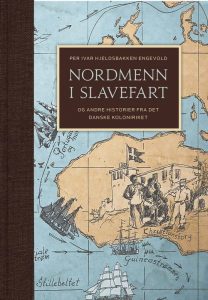It’s mid-April and things are coming along with sabbatical projects. With four print book projects and two online projects, my sabbatical plan was admittedly a bit over the top. This week I sent one book draft off to a religious scholar for feedback (No Compromise), a designer is finishing the second, the third edition of Sett i gang I. My co-author and I are nearing the finish line with a third, the third edition of Sett i gang II. I’ve gotten a good start on my fourth…
I thought it was time to update my blog about this fourth project. When I applied for sabbatical, I indicated a desire to align my scholarship and teaching more closely with Race & Ethnic Studies. I knew that I wanted to research the involvement of Norwegians in the transatlantic slave trade and the establishment of the Dano-Norwegian colonies in what is now known as the US Virgin Islands. The Norwegian diaspora has long been an interest of mine, and one that I have had ample opportunities to explore, but now my focus shifts to the diaspora outside of Scandinavia. If you want to read more about the topic in general, read my previous post.
Not knowing exactly what shape my sabbatical project would take, I have spent a considerable amount of time listening and reading, and making many site visits. What is written about Norwegian participation in the transatlantic slave trade is a hodgepodge of things in Danish, Norwegian, and English. Additionally, the majority are very specific journal articles or books that have sporadic mentions of Norwegians. There is very little that pieces it all together, and nothing that does in English.
 Just after I submitted my sabbatical plan, and just before I arrived in the Virgin Islands, I read a new book with great interest entitled Nordmenn i slavefart. It is geared to a general audience and presents the various roles Norwegians had in the transatlantic slave trade. It also addresses how this involvement has shaped the development of racism in Norway and how financial investment in it impacted the Norwegian economy. It is a thorough overview of what is known about the involvement from three parts of the world–Southeast Asia, West Africa, and the Caribbean. It finally puts all the Norwegian pieces together in a way that hasn’t been done before. However, it is in Norwegian, so not widely accessible to a wider audience.
Just after I submitted my sabbatical plan, and just before I arrived in the Virgin Islands, I read a new book with great interest entitled Nordmenn i slavefart. It is geared to a general audience and presents the various roles Norwegians had in the transatlantic slave trade. It also addresses how this involvement has shaped the development of racism in Norway and how financial investment in it impacted the Norwegian economy. It is a thorough overview of what is known about the involvement from three parts of the world–Southeast Asia, West Africa, and the Caribbean. It finally puts all the Norwegian pieces together in a way that hasn’t been done before. However, it is in Norwegian, so not widely accessible to a wider audience.
After a number of emails and conversations with author/ historian, Per Ivar Hjeldsbakken Engevold, I’m busy on an English language edition of the book. I really hadn’t intended on a book length project, nor had I intended to do another translation, but I really feel strongly that this is the overview that the English-reading audience needs.
I had hoped by the time I wrote this post that I’d have a great title. Slavefart isn’t one that translates easily- Nordmenn i slavefart translates roughly to Norwegians on slave voyages, it sounds much better in Norwegian. The perfect title hasn’t presented itself just yet. But other than that, I am making good progress! Like No Compromise, I’ve found the topic to be so interesting and have been doing a considerable amount of research in addition to the translation (aka rabbit holes). This helps me have a better understanding of the topic, but also will result in a few new chapters in the English language edition. In addition to reading, I’ve been visiting cemeteries, libraries, former plantations, and going to talks and events.
The exact timeframe for this project is dependent on the others, because they were in the works first. I do anticipate building on it for upcoming talks and events for the 2025 bicentennial commemoration of Norwegian migration to America. Why? Because this part of history is often left out of what is all too commonly considered Norwegian and Norwegian-American history.